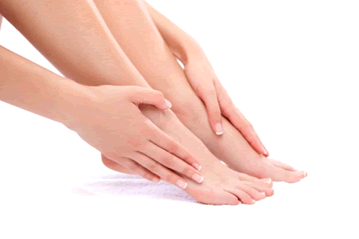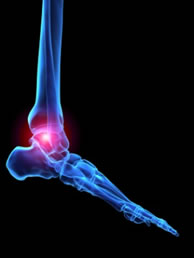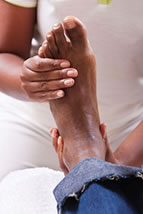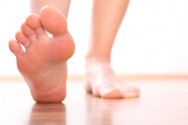
Greater Queens Podiatry, PLLC
 (718) 229-0222
(718) 229-0222
 (718) 229-0222
(718) 229-0222 Vanita Panjwani, a clinical pharmacy specialist and adjunct clinical faculty member of Wayne State University College of Pharmacy, has some advice for pharmacists about improving their patients’ gout problems. She explains how anti-inflammatory and urate-lowering medications are designed to help reduce gout. It’s important for patients to manage their uric acid levels, which they can do with their doctors. Treatment for gout involves patient education, managing your diet, and avoiding foods that may trigger your gout.
Vanita Panjwani, a clinical pharmacy specialist and adjunct clinical faculty member of Wayne State University College of Pharmacy, has some advice for pharmacists about improving their patients’ gout problems. She explains how anti-inflammatory and urate-lowering medications are designed to help reduce gout. It’s important for patients to manage their uric acid levels, which they can do with their doctors. Treatment for gout involves patient education, managing your diet, and avoiding foods that may trigger your gout.
Gout is a foot condition that requires certain treatment and care. If you are seeking treatment for a broken foot, visit Dr. Nicholas Megdanis from Greater Queens Podiatry PLLC. Our doctor will assess your injury and provide you with quality treatment.
What is Gout?
Gout is a type of arthritis caused by a buildup of uric acid in the bloodstream. It often develops in the foot, especially the big toe area, although it can manifest in other parts of the body as well. Gout can make walking and standing very painful and is especially common in diabetics and the obese.
People typically get gout because of a poor diet. Genetic predisposition is also a factor. The children of parents who have had gout frequently have a chance of developing it themselves.
Gout can easily be identified by redness and inflammation of the big toe and the surrounding areas of the foot. Other symptoms include extreme fatigue, joint pain, and running high fevers. Sometimes corticosteroid drugs can be prescribed to treat gout, but the best way to combat this disease is to get more exercise and eat a better diet.
If you have any questions, please feel free to contact our office located in Bayside, New York. We offer the newest diagnostic and treatment technologies for all your foot and ankle needs.
 According to a recent global study on Rheumatoid Arthritis (RA), North America has the biggest market for rheumatoid arthritis therapeutics. Europe follows at second. An increasing number of patients with rheumatoid arthritis are emerging in North America, causing a rise in research and development, in awareness among people of the condition, and in improved healthcare in the region. Drugs that treat RA include pain relieving drugs, corticosteroids, disease modifying anti-rheumatic drugs (DMARDs), biologics, and non-biologic drugs.
According to a recent global study on Rheumatoid Arthritis (RA), North America has the biggest market for rheumatoid arthritis therapeutics. Europe follows at second. An increasing number of patients with rheumatoid arthritis are emerging in North America, causing a rise in research and development, in awareness among people of the condition, and in improved healthcare in the region. Drugs that treat RA include pain relieving drugs, corticosteroids, disease modifying anti-rheumatic drugs (DMARDs), biologics, and non-biologic drugs.
Because RA affects more than just your joints, including the joints in your feet and ankles, it is important to seek early diagnosis from your podiatrist if you feel like the pain in your feet might be caused by RA. For more information about Rheumatoid Arthritis and its symptoms, consult with Dr. Nicholas Megdanis of Greater Queens Podiatry, PLLC. Our doctor will assess your condition and provide you with quality foot and ankle treatment.
What Is Rheumatoid Arthritis?
Rheumatoid Arthritis (RA) is an autoimmune disorder in which the body’s own immune system attacks the membranes surrounding the joints. Inflammation of the lining and eventually the destruction of the joint’s cartilage and bone occur, causing severe pain and immobility.
Rheumatoid Arthritis of the Feet
Although RA usually attacks multiple bones and joints throughout the entire body, almost 90 percent of cases result in pain in the foot or ankle area.
Symptoms
- Swelling & pain in the feet
- Stiffness in the feet
- Pain on the ball or sole of feet
- Joint shift and deformation
Diagnosis
Quick diagnosis of RA in the feet is important so that the podiatrist can treat the area effectively. Your doctor will ask you about your medical history, occupation, and lifestyle to determine the origin of the condition. Rheumatoid Factor tests help to determine if someone is affected by the disease.
If you have any questions, please feel free to contact our offices in New York. We offer the newest diagnostic and treatment technologies for all your foot and ankle needs.
 Bindi Irwin has suffered both blisters and the loss of four toenails after her time on the TV show, Dancing With The Stars. The 17-year-old star had been dancing with swollen knees and blisters on the bottom of her feet, which she revealed recently on the November 2 episode. She says that she was “one to never complain.” Blisters can fade over time with the right treatment, and pressure should be alleviated from your feet following the appearance of blisters.
Bindi Irwin has suffered both blisters and the loss of four toenails after her time on the TV show, Dancing With The Stars. The 17-year-old star had been dancing with swollen knees and blisters on the bottom of her feet, which she revealed recently on the November 2 episode. She says that she was “one to never complain.” Blisters can fade over time with the right treatment, and pressure should be alleviated from your feet following the appearance of blisters.
Blisters are prone to making everyday activities extremely uncomfortable. For professional help, see Dr. Nicholas Megdanis of Greater Queens Podiatry, PLLC. Our doctor will ensure that your feet receive the care that they need.
Foot Blisters
Foot blisters develop as a result of constantly wearing tight or ill-fitting footwear. This happens due to the constant rubbing from the shoe, which can often lead to pain.
What are Foot Blisters?
A foot blister is a small fluid-filled pocket that forms on the upper-most layer of the skin. Blisters are filled with clear fluid and can lead to blood drainage or pus if the area becomes infected.
How do Blisters Form?
Blisters on the feet are often the result of constant friction of skin and material, usually by shoe rubbing. Walking in sandals, boots, or shoes that don’t fit properly for long periods of time can result in a blister. Having consistent foot moisture and humidity can easily lead to blister formation.
Prevention & Treatment
It is important to properly care for the affected area in order to prevent infection and ease the pain. Do not lance the blister and use a Band-Aid to provide pain relief. Also, be sure to keep your feet dry and wear proper fitting shoes. If you see blood or pus in a blister, seek assistance from a doctor.
If you have any questions, please feel free to contact our offices in New York. We offer the newest diagnostic and treatment technologies for all your foot and ankle needs.
 Heel pain can be caused by several different reasons, but one particular condition to look out for is plantar fasciitis. Plantar fasciitis results when the tissue between your heel bone and toes, called the plantar fascia, becomes inflamed. This can be caused by factors such as weight, your age, and the kind of physical activity you do. Women are more prone to plantar fasciitis than men, and it is important that the condition is treated when diagnosed. Some treatment options include physical therapy, exercising programs, deep tissue massage, wearing orthopedics, and surgery.
Heel pain can be caused by several different reasons, but one particular condition to look out for is plantar fasciitis. Plantar fasciitis results when the tissue between your heel bone and toes, called the plantar fascia, becomes inflamed. This can be caused by factors such as weight, your age, and the kind of physical activity you do. Women are more prone to plantar fasciitis than men, and it is important that the condition is treated when diagnosed. Some treatment options include physical therapy, exercising programs, deep tissue massage, wearing orthopedics, and surgery.
Plantar fasciitis can be very painful and inconvenient. If you are suffering from diabetes or have any other concerns about your feet contact Dr. Nicholas Megdanis of Greater Queens Podiatry, PLLC. Our doctor will diagnose and treat your foot and ankle needs.
What is Plantar Fasciitis?
Plantar fasciitis is the inflammation of the thick band of tissue that runs along the bottom of your foot, known as the plantar fascia, and causes mild to severe heel pain.
What Causes Plantar Fasciitis?
· Excessive running
· Non-supportive shoes
· Overpronation
· Repeated stretching and tearing of the plantar fascia
How Can It Be Treated?
· Conservative measures – anti-inflammatories, ice packs, stretching exercises, physical therapy, orthotic devices
· Shockwave therapy – sound waves are sent to the affected area to facilitate healing and are usually used for chronic cases of plantar fasciitis
· Surgery – usually only used as a last resort when all else fails. The plantar fascia can be surgically detached from the heel
While very treatable, plantar fasciitis is definitely not something that should be ignored. Especially in severe cases, speaking to your doctor right away is highly recommended to avoid complications and severe heel pain. Your podiatrist can work with you to provide the appropriate treatment options tailored to your condition.
If you have any questions, please feel free to contact our offices in New York. We offer the newest diagnostic and treatment technologies for all your foot and ankle needs.
 Cedric the Entertainer used to be known for his comedic talent in television series and hit movies such as Barbershop and Original Kings of Comedy, but since 2014, Cedric has taken a more serious turn in diabetes education. With the help of Step on Up, an educational developmental program for those suffering from diabetes and diabetic peripheral neuropathy Cedric has been spreading awareness. “My dad has Type 2 diabetes, and we just saw him dealing with the pain, you know,” he recalled, relating to the issue on a personal level.
Cedric the Entertainer used to be known for his comedic talent in television series and hit movies such as Barbershop and Original Kings of Comedy, but since 2014, Cedric has taken a more serious turn in diabetes education. With the help of Step on Up, an educational developmental program for those suffering from diabetes and diabetic peripheral neuropathy Cedric has been spreading awareness. “My dad has Type 2 diabetes, and we just saw him dealing with the pain, you know,” he recalled, relating to the issue on a personal level.
Diabetic foot care is important in preventing foot ailments such as ulcers. If you are suffering from diabetes or have any other concerns about your feet contact Dr. Nicholas Megdanis of Greater Queens Podiatry, PLLC. Our doctor will diagnose and treat your foot and ankle needs.
Diabetic Foot Care
Diabetes affects millions of people every year. Diabetes can damage blood vessels in many parts of the body, including the feet. Because of this, taking care of your feet is essential if you have diabetes, and having a podiatrist help monitor your foot health is highly recommended.
The Importance of Caring for Your Feet
● Routinely inspect your feet for bruises or sores.
● Wear socks that fit your feet comfortably.
● Wear comfortable shoes that provide adequate support.
Patients with diabetes should have their doctor monitor their blood levels because blood sugar levels play such a huge role in diabetic care. Monitoring these levels on a regular basis is highly advised.
It is always best to inform your healthcare professional of any concerns you may have regarding your feet, especially for diabetic patients. Early treatment and routine foot examinations are keys to maintaining proper health, especially because severe complications can arise if proper treatment is not applied.
If you have any questions, please feel free to contact our offices in New York. We offer the newest diagnostic and treatment technologies for all your foot and ankle needs.
| Bayside Office 4401 Francis Lewis Blvd Suite L3B Bayside, NY 11361 Phone: (718) 229-0222 Fax: (718) 717-0275 | Monday: 9:30am - 7pm |
E-mail us with any questions